

San Francisco General Hospital Goes to the Dogs
BY CHAITANYA TONDEPU
Hospitals are typically filled with sick adults, crying babies, anxious families murmuring amongst themselves, and nurses and doctors hurrying between patients. Yet, amongst humans, a visitor to Zuckerberg San Francisco General hospital (ZSFG) might encounter something furrier: a dog.
Allowing animals into medical facilities is a complex issue, governed by a web of laws, regulations, and hospital-specific policies. In the United States, there are roughly a half-million service dogs, a population that may be growing at upwards of 10 percent a year. A service animal is a dog or miniature horse trained to assist individuals with disabilities by performing specific tasks, such as alerting a diabetic to blood sugar changes, reminding someone with depression to take medication, or detecting and responding to seizures.
In addition, an American Psychiatric Association survey found that there are a couple hundred thousand emotional support animals (ESAs) nationwide, with a 50 percent increase in ESA registrations over the past five years.
An exploding population of service and emotional support animals is acting to change attitudes and create new challenges related to the role creatures can play in stressful environments, including at health care facilities.
According to the Americans with Disabilities Act (ADA), service animals must be permitted in Title II and III sites, which include government-run and public facilities, such as universities, hospitals and open spaces. Moreover, ADA doesn’t require animal companions to show certification, nor are businesses/ facilities allowed to request documentation regarding the dog’s service/support abilities.
California law provides psychiatric service dogs with the same public access rights as service dogs. These animals are trained to assist individuals with mental disabilities through tasks like gentle wakeups and pressure therapy by using body weight.
ESAs have more limited access rights; public spaces like hospitals are not legally required to accommodate them. However, at ZSFG patients are allowed to have pets for emotional support, even if they’re not service animals. According to the Department of Public


Health Media Desk, ZSFG visitors and patients can bring service and support animals into facilities, as long as they don’t pose a safety threat.
“The emergency department (ED) was established in 2016,” said Christopher Colwell, Chief of Emergency Medicine at Zuckerberg SFGH and Trauma Center. “We changed over from the cement building to the new one that gave us more individual rooms and freedom to accommodate animals in the ED. We make every effort to accommodate any request that our patients make while maintaining safety of patient staff and other patients. In most cases, we’re dealing with dogs, and we’ve had other animals requested as well.”
Colwell, who has been at ZSFG since June 2016, has “... noticed animals accompanying patients far more often, certainly several times a month, maybe more.”
Robotic dogs and cats attend dementia patients in SFGH’s Acute Care for the Elders unit.
“I’ve seen fantastic results from dog therapy,” commented Colwell. “The way patients light up, including those that don’t relate well to human beings, almost always relate well to animals. Twenty-five to 30 years ago it was almost a never event and at the time, there was no accommodation
Potrero Annex Residents Must Relocate to Make Way for Annex Demolition
BY JESSICA ZIMMER
In February, the San Francisco Housing Authority issued a state-required 90-day notice evicting 66 households living in 700-915 Missouri Street, 1-75 Turner Terrace, and 1-97 Watchman Way. The buildings, part of Potrero Annex, are scheduled to be demolished by the fall, after EVE Community Village, formerly known as Potrero Block B, has been constructed.
The Authority-issued notice identifies three potential pathways for dislodged households. They can move to EVE, located at 1801 25th Street, expected to be occupiable by June. If a suitably sized EVE unit isn’t available, the family can work with the Authority to attempt to find offsite HOPE
SF housing. Or they can request a Section 8 housing voucher, which’d cover a portion of the rent for market rate units.
“We will have more clarity once a general contractor is on board for the demolition and relocation details are finalized,” said a representative from the Mayor’s Office of Housing and Community Development (MOHCD).
EVE Community Village will consist of 155 residences. One hundred and seventeen are reserved as replacements for present Annex residents, with another 38 affordable units will be offered to those who qualify, with a preference for current or former Potrero Annex-Terrace occupants. There’ll be 40 one-bedrooms, 53 two-bedrooms, 51 three-bedrooms, and 11 four-bedrooms. An additional two units will be reserved for on-site staff.
In response to the notice, Annex tenants asked Potrero Hill resident, Shervon
The Trump Administration’s attacks on the federal government, immigrants, the national economy, and much else ratcheted up last month. In response, more than a half-million people gathered in St. Augustine, Florida, Salt Lake City, San Francisco, and throughout the country to protest harm to national parks, small businesses, and public education, amongst other causes. PHOTO: Potrero View Staff
FREE
Serving the Potrero Hill, Dogpatch, Mission Bay and SOMA Neighborhoods Since 1970 MAY 2025
PUBLISHER’S VIEW
The Pitt
BY STEVEN J. MOSS
At first the Max show, The Pitt, seems like a remake of ER , the oughtera television hospital procedural that launched George Clooney’s career. Noah Wyle, who played fresh-faced John Carter on ER , is all grown up as The Pitt’s chief emergency room doctor, Michael “Robby” Robinavitch. The pacing is similar, with wave after wave of bloody, unconscious, and confused patients surging through the ER, attended to by a thin layer of medical students, residents, nurses, and specialists.
As the show unfolds, over a single very long day, it reveals a more nuanced storyline, one that mirrors the social, economic, and institutional cracks that bedevil America. A muscular, white, 40-ish male, after impatiently pacing for hours in a waiting room that bobs like a Noah’s ark of gender, race, and caste, ends up punching a head nurse in frustration. There are multiple deaths, or near deaths, from fentanyl masquerading as a more benign study-aid or party drug. A mother struggles to get her teenage son mental help before he goes murderously psycho.
It’s a bit like a zombie movie, with the wounded and afflicted banging at the emergency room doors, demanding access to the skilled brains inside to relieve their pain. There’s both a thrill and satisfaction in witnessing competent doctors mostly doing what’s needed to save lives, even souls, sometimes their own. But the parallel, not so hidden, story is that we, the zombies, are at the precipice of overwhelming the last sane system standing between us and utter devastation.
Flashbacks to COVID-19 remind us that not so long ago it took all-handson-deck to barely contain a voracious pandemic. Still, 1.2 million Americans died, with another more than 100 million impacted in long- or short-term ways. The Pitt is pit-of-the-stomach terrifying because it suggests that our present reality may be even worse. We are the angry white man who feels that the government has put us last in line for essential services. We are the parents of the teenager who took the wrong poison
PUBLISHER'S VIEW continues on page 14
SHORT CUTS
Thirty Ink — a collection of Stephen Curry’s eight businesses and 13 entities — pulled out of a Dogpatch development project due to a dispute with the carpenters union. “Our dream of building a new Thirty Ink HQ at 600 20th Street has been destroyed by the [Nor Cal Carpenters Union],” said a company spokesperson. According to a press release, Curry’s company committed to relying on a partially unionized workforce, but the offer was “deemed unacceptable” by Nor Cal Carpenters Union’s director of organizing, Jacob Adiarte. “Unfortunately, our generous and completely unnecessary approach has been deemed unacceptable,” said the spokesperson. “[Adiarte] has personally gone out of his way to make it untenable for us to build in San Francisco.” Privately funded projects typically don’t require union labor unless they rely on public subsidies, though many use union workers to avoid labor conflicts…Prompted by the Dogpatch Business Association, Mayor Daniel Lurie reached out to Thirty Ink leaders and other stakeholders to try to save the development. Among strategies being discussed are finding a new general contractor, donating labor, and restructuring the scheme.
Piccino
Dogpatch favorite Piccino opened a second location in the Presidio, with plans for a third next year in Marin. Piccino Presidio’s menu features the same pizzas and popular chiocciole
pasta with fennel-pork sausage and kale as the original. The new restaurant, situated in the former Sessions space on the Lucasfilm campus, is expansive, offering 230 seats, a main dining room and bar, two private rooms, and a large front porch… Flour + Water Pizza Shop opened in Mission Rock, offering quick-service pizza, under the tutelage of co-chefs Thomas McNaughton and Ryan Pollnow.
Kalifeature
The Hindu goddess Kali, often depicted as fierce and terrifying, seems to be particularly active these days, altering time and ushering in death, destruction, and, hopefully, rebirth. Among the neighborhood businesses fallen, Dos Pinas closed its Potrero Hill location earlier this year, continuing in a different fashion as Publico Urban Taqueria on Ninth Street. Café Da Fonk, also on De Haro, died in March, with its
Enclosed is my check. Please send, along with this form, to: The Potrero View, 1459 18th St., #214, S.F., CA 94107 I am sending my payment via PayPal to office@potreroview.net.

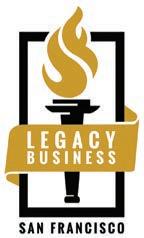
PUBLISHER Steven J. Moss
ACCOUNTING MANAGER Catie Magee
MARKETING MANAGER Richard Romero
PRODUCTION MANAGER Helena Chiu
THIS MONTH’S CONTRIBUTORS
Jenna Duncan, Steven J. Moss, Mark Steensland, Chaitanya Tondepu, Dena R. Verkuil, Jessica Zimmer
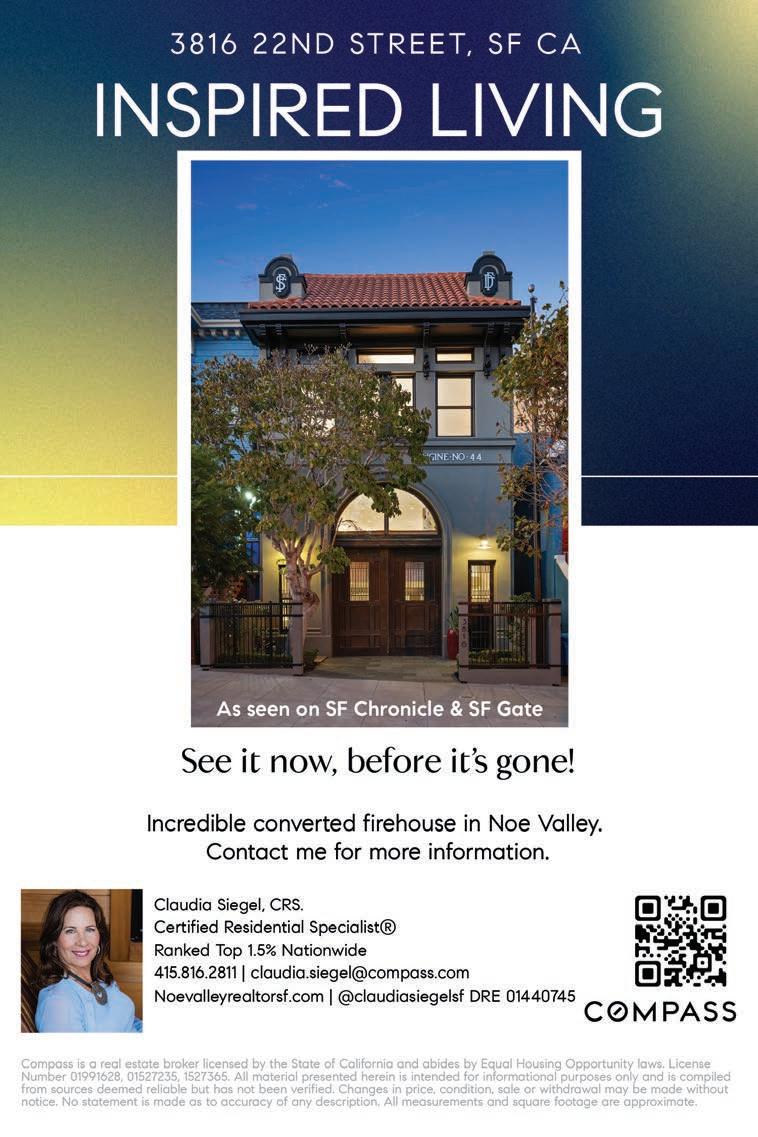
SHORT CUTS continues on page 14
Curry Fouled
The Scales are Tipping in the Software Engineering Industry
BY THOMAS HUNTER II
Employers and employees have always existed in a delicate equilibrium influenced by forces like supply and demand of the available workforce as well as societal factors. This equilibrium affects things like the hours employees are expected to work, fairness of pay, and an employer’s aversion to layoffs as moderated by fear of reputation damage.
During the early 20th Century, the equilibrium tipped strongly towards employers. Poor safety standards resulted in the Triangle Shirtwaist Factory fire on March 25, 1911, killing 146 workers, mostly immigrant women. The lust for cheap labor ultimately resulted in the Fair Labor Standards Act of 1938, which prohibited children under 14 from working.
Laws and societal changes tipped the balance towards employees during

the second half of last century. The rate of workplace-related deaths has steadily declined. Average weekly hours per worker has dropped from around 60 in 1870 to roughly 35 in 2017.
In some industries, such as software engineering, the equilibrium has been very favorable for employees. Paychecks have been high, vacation time easy to obtain, and in regions like the Bay Area tech offices come with perks like endless snacks, beverages and beers. Some even offer complimentary laundry. This fortunate treatment is largely due to high demand for engineers.
That equilibrium is changing.
Many point to the “AI revolution” as reducing employee value. AI code assistant tools like GitHub Copilot or Cursor increase software engineer efficiency; not as many employees are needed to produce the same level of code. But it takes years for the effects of nascent

The Potrero Dogpatch Merchants Association | potrerodogpatch.com
We meet on the 2nd Tuesday every two months from 9:45 - 11:00 a.m. Next meeting - June 10 at the Dogpatch Hub. The neighborhood’s only business association recognized by the State and the City.
Dogpatch Business Association | dbasf.com
Dogpatch Business Association (DBA) promotes and supports Dogpatch businesses. Business owners and community members are invited to get involved!
• Join the DBA! (dbasf.com)
• S ign up for our newsletter to find out about member meetings, opportunities, and local news
• F ollow us on Instagram @destinationdogpatch to learn more about Dogpatch businesses, events, and activities
• E xplore Dogpatch through a curated wayfinding map of local businesses, available online at https://linktr.ee/exploredogpatch
Friends of Jackson Park (FoJP) | friendsofjacksonpark.org
Join us and Church of 8 Wheels for an unforgettable night of silent roller disco! While the event is free to attend, donations are greatly appreciated to keep the fun rolling at Jackson! See you on the basketball court on Friday, May 16th, 7 to 9 p.m. For adults 18+ only.
Green Benefit District | GreenBenefit.org
We cleared the first phase of our renewal process, the petition phase. Thank you for your support! Please stay tuned for the Ballot phase later this Spring, when the SF Election Commission will mail ballots to all property owners in the District! https://greenbenefit.org/renewal
Our Monthly Board Meeting is on Wednesday, May 21st from 6:30 to 8:30 p.m. at the Dogpatch Hub (1278 Minnesota St.), where we discuss all the great things we are doing in the neighborhood.
Help make the Green Benefit District greener. Our next GBD volunteer event is at the Vermont Greenway & Eco-Patch on Saturday, May 17, at 10 a.m. Sign up for a GBD volunteer event at greenbenefit.org/volunteer or report an issue at greenbenefit.org/report-a-problem
The Potrero Boosters Neighborhood Association | potreroboosters.org
The Potrero Boosters Neighborhood Association informs, empowers and represents the residents of the Potrero on issues impacting our community in order to develop and maintain complete, vibrant neighborhoods. We’re continuing to meet via Zoom on the last Tuesday of each month. Go to www. potreroboosters.org to learn more about how to join us!
Starr King Open Space | StarrKingOpenSpace.org
Join our monthly volunteer days on the second Saturday of the month. This month it is Saturday, May 10 from 10 a.m. to 12 p.m. Our annual meeting and election is Tuesday, May 20 from 7 to 8 p.m. at the Dogpatch Hub. Food & drink provided. Donate to help keep Starr King Open Space open, accessible, and well-maintained for our neighborhood.
technology to be fully felt. While there are productivity gains from such tools, they aren’t the cause of present employer efforts to devalue engineers.
Degrading employee primacy is occurring for other reasons. Layoffs were so frequent throughout the COVID-19 pandemic that they’ve almost become routine. Likewise, the Trump Administration has fired more than 200,000 government workers and counting, further normalizing dismissals. After Elon Musk threw what appeared to be a Nazi salute the billionaire class felt liberated to abandon even a pretense of caring about the “common man,” as evidenced by Jack Dorsey’s recent entirely lowercase layoff email to 931 employees.
The scales are tipping in the software engineering industry. At the behest of the Trump Administration companies with government contracts abruptly dropped their diversity, equity and inclusion programs. Pay will likely
HANDY NUMBERS
decrease or flatline with inflation. The “unlimited” vacation policies, which were mostly a way to avoid paying leave time when an employee quits, will be limited. Trained software engineers will find it harder to get jobs or move between employers and will switch careers at a greater rate. Say goodbye to the free stroopwafel and kombucha.
There aren’t many ways to forestall such changes. Forming or joining a union may provide a better platform to negotiate pay and discourage layoffs. The luddite movement, commonly misattributed to merely breaking looms, could be reinvigorated to mimic attempts to prevent a similar equilibrium from tipping too far in favor of textile industry employers.
Then again, maybe all of this is inevitabile. As my colleague said, “at least there’s always woodworking.”
Thomas Hunter II lives on Sierra Street

San Francisco Board of Supervisors Honors Potrero Terrace Market
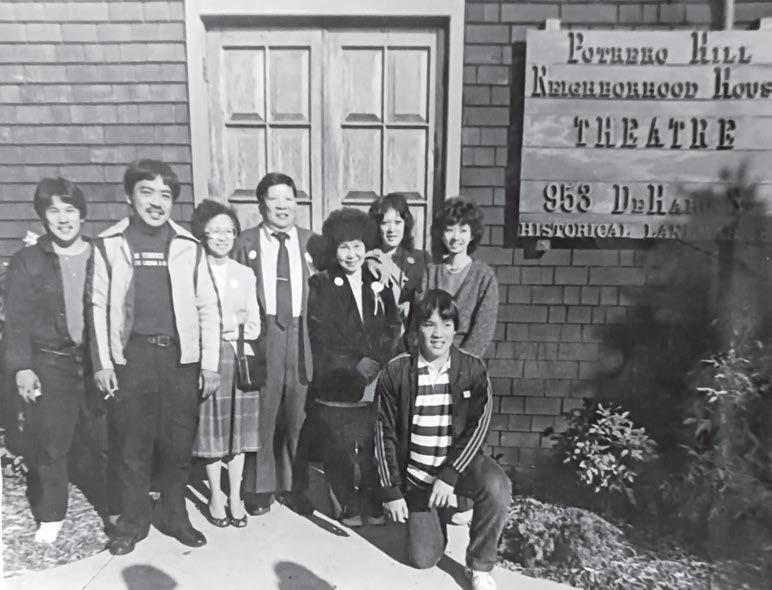
Last month the San Francisco Board of Supervisors recognized Mary and Edmund Woo, proprietors of Potrero Terrace Market, for their community service and generational legacy.
On March 1, 1960, Jack and Fong Woo, Chinatown residents, purchased a small store at 990 Wisconsin Street. Their children—Mary, Edmund, and siblings—grew up learning the business: stocking shelves, greeting customers, and understanding the values of hard work, family, and service. Over the decades, the store stood witness to history, including the dramatic moments of the 1970s-era Patty Hearst ransom that called for feeding the poor,
which unfolded just across the street. The Woo family shared a warm and lasting friendship with O.J. Simpson’s relatives.
Mary and Edmund took over the market when their parents retired.
“…we commend Mary and Edmund Woo for their lifelong commitment to Potrero Hill, for preserving a legacy built on love, labor, and deep community ties, and for continuing to honor their parents’ vision,” said District 10 Supervisor Shamann Walton. “Their store has nourished generations; not only with food, but with connection, kindness, and care. The bonds shared between this generational store are


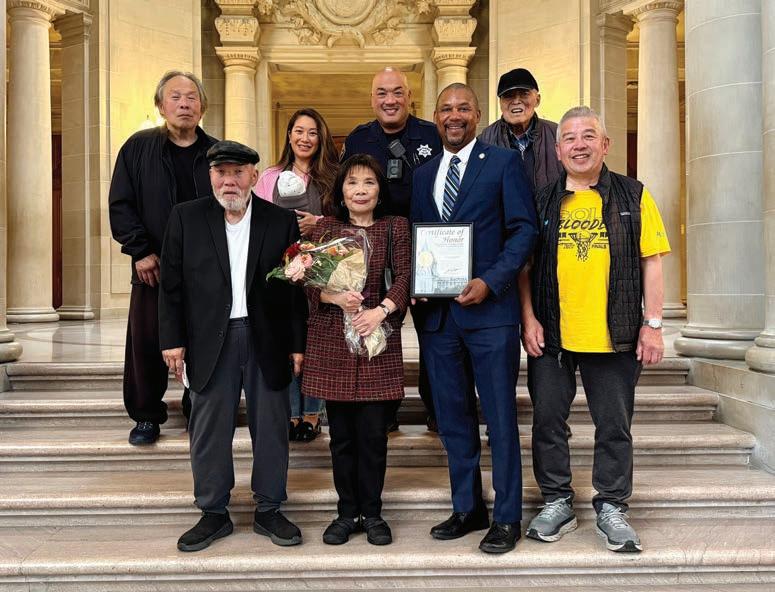
an example of how cultures can come together in community. I would argue that there is no better example of Asian and Black solidarity in a neighborhood.










Even as a young child growing up in Potrero Hill, we knew that Jack and Fong loved being a part of the ‘Hill.’”
[Left] Jack and Fong Woo, with family, honored in the early-1980s at the Potrero Hill Neighborhood House. PHOTO: Courtesy of The Woo Family [Right] Supervisor Walton and the Woo Family at City Hall last month. PHOTO: Natalie Gee

Galleria Tile Inspired by Three Generations of the Visona Family
BY JENNA DUNCAN
In the heart of San Francisco’s Design District, at 16th and Kansas streets, Galleria Tile offers a showroom that invites guests to encounter new ideas in flooring and tile. The store has a wide selection of tiles, including porcelain, ceramic, glass, and marble, sourced from more than a hundred manufacturers.
At the helm of the boutique home décor shop is 31-year-old Claudia Visona. Visona learned her trade from her mother, Deanna, who opened the store 30 years ago.
“My mom doesn’t really work here anymore, but she started this business because my grandma used to have a store down on 16th and [Harrison]; down by Jolene’s. It was called Dylan Tile,” Visona said. “I have clients who knew my grandma from Dylan Tile, way back in the ‘80s. And of course, clients who knew my mom. I’ll be out in the City on the weekend and I’ll run into my clients.”
Visona walks her dog, Huey, a fiveyear-old black poodle, around Showplace Square and Potrero Hill. They have an easy commute; they live about four blocks up the hill from the shop.
“We have a lot of selection, and we have a large range,” Visona said. “It’s not like when you go to Ann Sacks or Waterworks where you’re paying $50 per tile, every tile they’re showing. We have a range where you could have $5 per square foot to $100 per square foot. There’s something for everyone’s budget.”
“I stumbled into Galleria Tile while strolling in Potrero Hill a few months ago and was immediately smitten. My husband and I are remodeling our bathrooms and kitchen, but we don’t have the budget to hire an interior designer,” said Dolores Heights resident Debbie Findling. “While I know what I like and what I don’t like, I don’t have any particular design ability. Within a few minutes chatting with Claudia, she understood my design aesthetic and quickly gathered some tiles that complimented my style. It was like having my own personal design style guru! She is so incredibly talented and knowledgeable about different tiles, stones, and materials and didn’t push any particular agenda. She was also sensitive to my budget and made some recommendations to save me money.”
“We try our best to accommodate so people can get what they really want. Even if you have champagne taste on a beer budget!” Visona said.
“ When I went to Galleria Tile and met with Claudia, she was able to understand the look I was going for and point me in the right direction,” said Noe Valley resident Anna Burke. “[Claudia] gave me great advice on how to use a tile that I really liked, making
it more of an accent piece rather than an entire wall. She drew a sketch for me and explained what types of tiles would be best for the bathrooms. She has a wonderful sense of design and easily put together the types of tiles that work well with one another.”
Many Victorian homes in the Mission District, Bernal Heights and Mission Dolores were built with elegant antique tile designs. Visona works with a tile maker, Original Style, from England, which specializes in this style.
“I had a client come with a beautiful stone tile,” she recounted. “When you have a steam shower, you are not supposed to use stone it. But another showroom had told them it was okay to use it, because stone tile costs a lot more than porcelain.”
“We retiled our bathroom, and we worked with Claudia to choose tile. She was great; she had suggestions based on our parameters: small bathroom, high ceilings, blue vanity, that sort of thing,” said Glenn Park resident, Heather World. “She knew which tile is more prone to stain and which is easier to clean, little details that we would not likely have figured out on our own. Plus, she’s a joyful spirit, so that’s kind of fun!”
Visona predicts that Trump Administration tariffs could put price pressures on imported tile.
“We have already seen some impact with India,” she said. “We don’t sell that many products from India, but some marbles come from there. As far as my Spanish and Italian we haven’t seen anything yet. We shall see!”
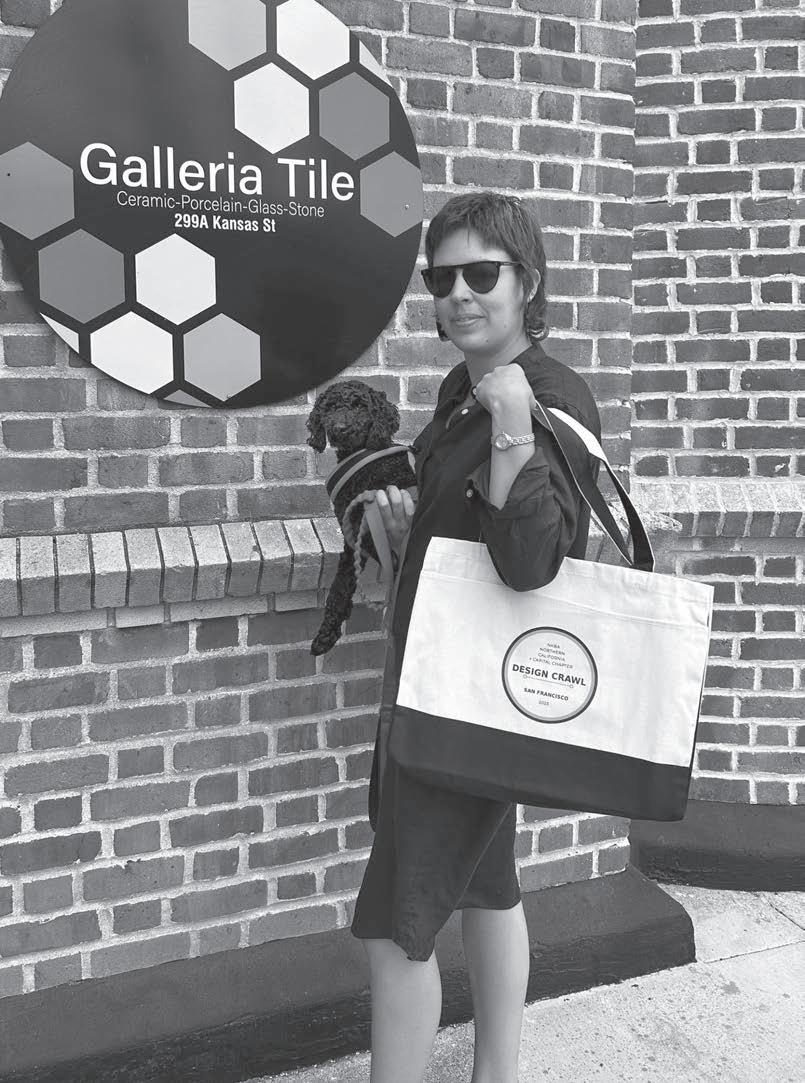
To avoid shipping disruptions or cost hikes, Visona recommends ordering imported materials sooner rather than later.
Visona took over Galleria Tile after spending two years studying in Italy at the Florence Institute of Design International, staying an additional year and working at a jewelry store in Santa Croce.
“ When I was 18 or 19, I totally wanted to escape. I grew up in Mill Valley. Going to San Francisco wasn’t that far away,” she said. “I tried to run away a couple of times because I was like, ‘Ugh, I don’t want to run this business!’”
After COVID-19, when she moved back from Italy, her attitude about the family business shifted.
“Now that I have friends here and I got more comfortable in the City, I don’t think I would leave again,” she said. “And I love this job now.”
Visona’s father, Giuseppe, is a tile installer; her brother, Tiberio, owns Delta T Plumbing in Marin.

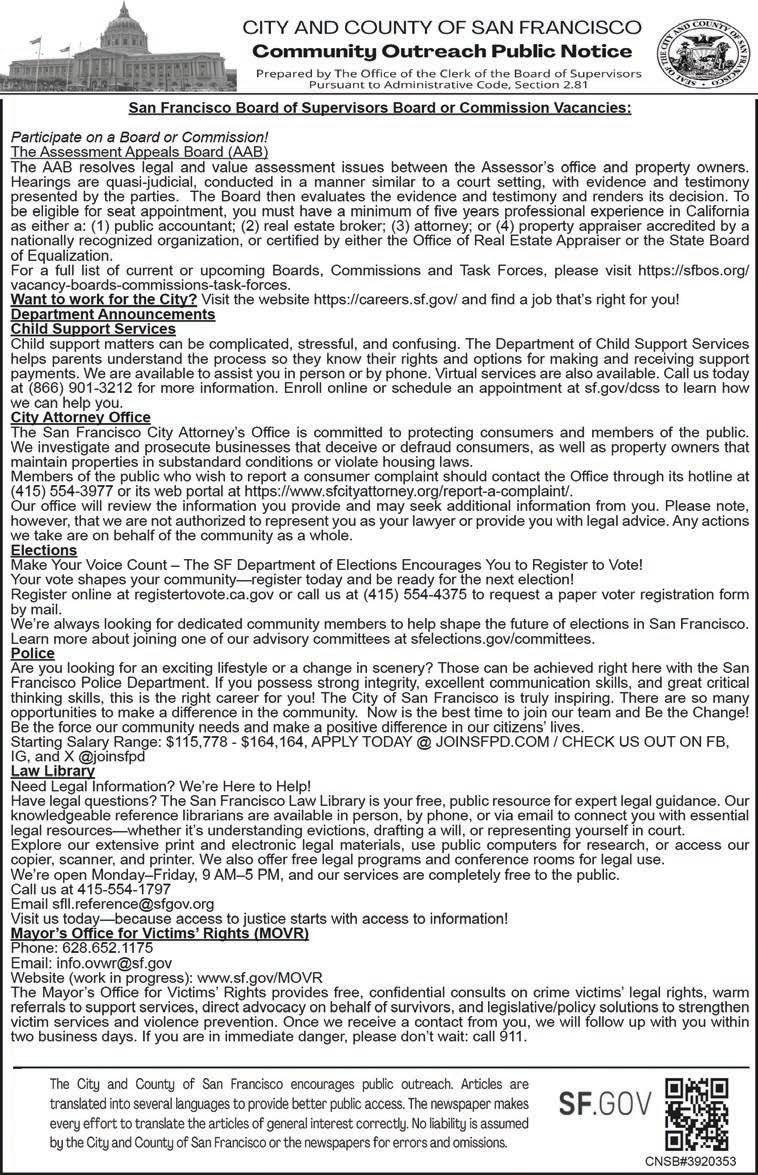
Ms. Claudia Visona and her five-year-old poodle, Huey.
PHOTO: Jenna Duncan

Many San Francisco homes still contain outdated electrical systems, with more and more insurance companies refusing to cover properties that still have knob & tube.
If your plan is to sell your home, the best way to encourage competitive offers is to fully update your electrical system so buyers do not have to factor in this extra cost.
It’s proven: Turn-key homes = higher sales price!
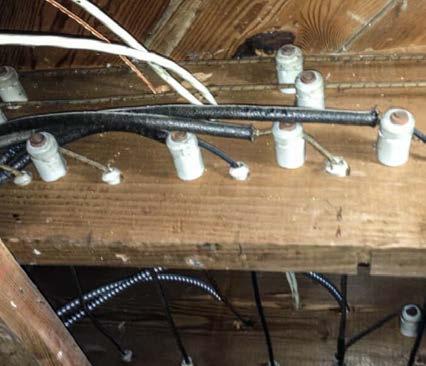
Mercy Electric has a team of highly skilled and licensed electricians who work with your timeline. Customers describe their work as “extremely tidy and neat and workmanlike” and “nothing short of outstanding .” Other services offered:
• Upgrading electric panels
• Installing EV chargers
• Installing light fixtures

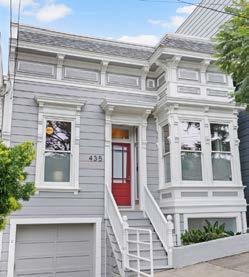

• New construction wiring
• Remodel wiring

Hi Neighbor,
I’m Andres Restrepo, local Realtor and Potrero Hill resident. I’m so grateful to have worked with many neighbors over the past few years.
I’d love to provide a free home valuation and give you my professional opinion on what upgrades matter, whether you decide to sell or just want to update your home! Feel free to ask me about local vendors, too, like Mercy Electric!







COMMUNITY |MAY
Now through May 24
Art: Ward Schumaker
Selected works, from 2003 to present, from Pennsylvania Avenue resident Ward Schumaker. The Fourth Wall, 473 25th Street, Oakland.
Community: Y for Youth Community
Festival
As part of the Dogpatch YMCA’s official opening, Y for Youth celebrates Bay Area young people. Features live music and dance, kid activities, refreshments, and an appearance by Clifford the Big Red Dog. Free. Noon to 4 p.m. Dogpatch YMCA at Crane Cove.
Community: Friends of Potrero Hill Preschool Fundraiser
Celebrate with Friends of Potrero Hill
Preschool families past, present, and future at “Bloom & Build | Community Event.” Features interactive and collaborative art projects, music, food, drinks, and silent auction. Tickets are sliding scale. 3 p.m. to 7 p.m. Friends of Potrero Hill Nursery School, 1060A Tennessee Street.
Journalism: Catchlight Visual Storytelling Summit
The CatchLight Visual Storytelling Summit returns to San Francisco on World Press Freedom Day with a gathering of leaders in photography and visual media, exploring the power of images to shape memory and history. This year’s summit, emceed by journalist, author, and educator Pendarvis Harshaw, explores how visual storytelling preserves history, challenges misinformation, and safeguards the integrity of shared narratives. 9 a.m. to 8 p.m. KQED 2601 Mariposa Street. To RSVP: 2025 CatchLight Visual Storytelling Summit + Night of Photojournalism Tickets| Eventbrite.
Music: Mozart to Mendelssohn Mozart to Mendelssohn, presented by the San Francisco Community Orchestra Association, formed in 2014 to accommodate musicians who want to perform large orchestral works. The group typically stages pieces of varying complexity and difficulty from the 18th to 20th centuries. 3 to 5 p.m.


Free. Herbst Theater, 401 Van Ness Avenue. For more information: https:// bit.ly/48cVO81
5/6 Tuesday through 5/26 Monday Theater: PlayGround’s 29th annual Festival of New Works
This year’s festival, performed live at Potrero Stage and simulcast, features premiere presentations of Matthew Morishige’s Work/Shoot and Jessica June Rowe’s The Passing Storm; as well as developmental readings of The Red Fortune Cookie by Karissa Murrell Myers, Yi-An Bu Yi An (Madam Ease is not at Ease) by Lyra Nalan, Mycelium by Juliet Kang Huneke, and Winter’s End by J.S. Puller. In addition, the annual Best of PlayGround(SF) presents short works from the 30th anniversary season Monday Night staged reading series; an evening of short works by Bay Area high school dramatists as part of the 17th annual Young Playwrights Project; and a playwrights panel and festival opening reception. Free. For tickets and the full lineup, visit tickets. playground-sf.org.
Employment: STEM Networking
Meet like-minded individuals, industry experts, and potential mentors. Participate in discussions and gain insights from technology professionals. Explore new opportunities and network in the STEM community. Receive a food and drink ticket for refreshments while making meaningful connections. Come ready to be inspired, share your experiences, and take your career to the next level. 5:30 to 7:30 p.m. $12.51. SPARK Social, 601 Mission Bay Boulevard. For more information: https://bit.ly/4jcGbRZ
Art: Celebrate World Collage Day
Learn essential tools and techniques to create Victorian home-inspired collages. Led by local artist Liz Scotta, who has been crafting collages since 2019 using magazine cutouts and everyday materials, this class offers insight into her creative process.
Liz’s piece, Zoom Meeting, was accepted into the de Young’s On the Edge exhibition in 2020. Liz will provide guidance on surrealistic collage
techniques, how to layer materials and construct both realistic and dreamlike images of San Francisco’s iconic Victorian architecture. Work with magazines, scissors, glue, and wooden sub stacks to complete two unique Victorian home collages; one on paper, one on a wooden block. Class is limited to 10 students. 1 to 4 p.m. $75. ARCH Art Supplies, 1490 17th Street. For more information: https://bit.ly/4lfKzBx
Community: Dogpatch Spring Market Join the Dogpatch Business Association, merchants, and vendors to enjoy shopping and activities from local spots and artists, with food, drinks, live music, and more! 11 a.m. to 5 p.m., 22nd Street between Third and Illinois streets.
Mother's Day is Sunday May 11

Books: The Big We by Hali Lee
Through stories of giving circles around the country, including her own experience starting the Asian Women Giving Circle, Hali Lee writes about an expansive vision for philanthropy’s future, one led by people focusing on community, who care about rebuilding civic space, and are yearning for connection, and purpose. 5:30 p.m. doors open, 6 to 7 p.m. program, 7 p.m. book signing. Commonwealth Club World Affairs of California, 110 The Embarcadero, Taube Family Auditorium. Prices range from free to $38. Online tickets also available. For more information: https://bit. ly/3EcPYIU
Garden: Beginning Beekeeping
An introduction to bees and beekeeping practices, whether starting a backyard hive or just bee-curious. Bee basics, their progress through
spring and summer, and what to expect as colonies expand in the warmer, longer days. Class outline, suggested reading, and additional recommendations provided. Instructors will bring an observation hive to see bees in action, with Garden for the Environment’s hives visible from a distance. The class is designed for absolute beginners; no prerequisite knowledge required. Part of an ongoing series of beginning beekeeping classes; each class will emphasize what’s happening in a beehive throughout the seasons. $27.24 to $53.49. Garden for the Environment, 1590 Seventh Avenue. More information: https://bit.ly/4j8ztwu
Dance: TLFit - Live
TLFit - Live (and LIVESTREAM) is a high energy cardio dance workout. Full-body exercise that makes the most of an hour and keeps things fresh, with a mix of music. 9:30 to 10:30 a.m. The Smuin Center for Dance. To register: https://tinyurl.com/eyfemmcn
5/24 Saturday and 5/25 Sunday Festival: Carnaval
A two–day festival that sprawls across 17 Mission District blocks, with five main stages, 50 local performing artists, and 400 vendors. This year’s theme is “AfroMundo: African Diaspora in the Americas.” The festival includes international food, dancing, sampling sites and entertainment for families, couples and friends of all ethnic, social and economic backgrounds. Welcoming more than 400,000 people annually, Carnaval San Francisco is California’s largest multicultural celebration. The Grand Parade boasts a 60-contingent lineup, with more than 3,000 artists representing the cultural heritages of Brazil, Mexico, Panama, Bolivia, Cuba, Peru, Puerto Rico, Nicaragua, Colombia, Trinidad & Tobago, Guatemala, El Salvador, and more. Festival: Saturday and Sunday, May 24 to 25, 10 a.m. to 6 p.m. Grand Parade: Sunday, May 25, 9:30 a.m. to 2:30 p.m. Parade begins at 24th and Bryant streets. Free. For more information: https:// carnavalsanfrancisco.org/


San Francisco (CA38) Ceremony
May 25, 12 Noon, (11:30am arrival), Lands End ca38foundation@gmail.com (rsvp)
Legion, Cathay Post #384 & VFW Chinatown Post #4618
May 25, 3pm in St. Mary’s Square (SF Chinatown)
May 26, 11:00am, 1300 Sneath Lane, San Bruno CA
May 26, 11:00am, 1 Lincoln Blvd., Presidio of


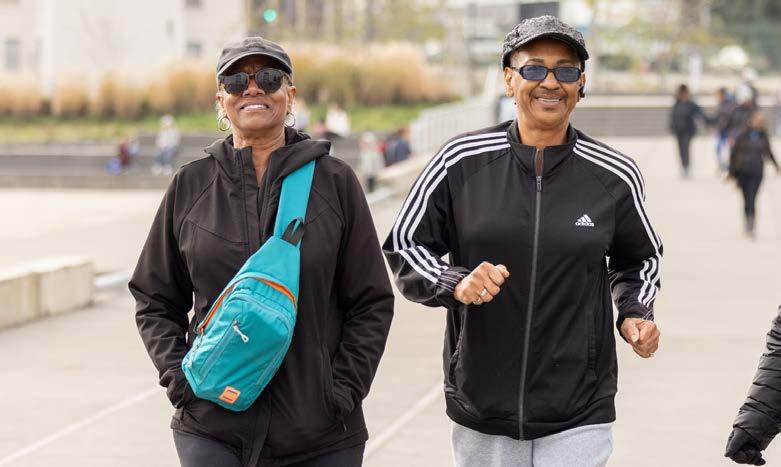



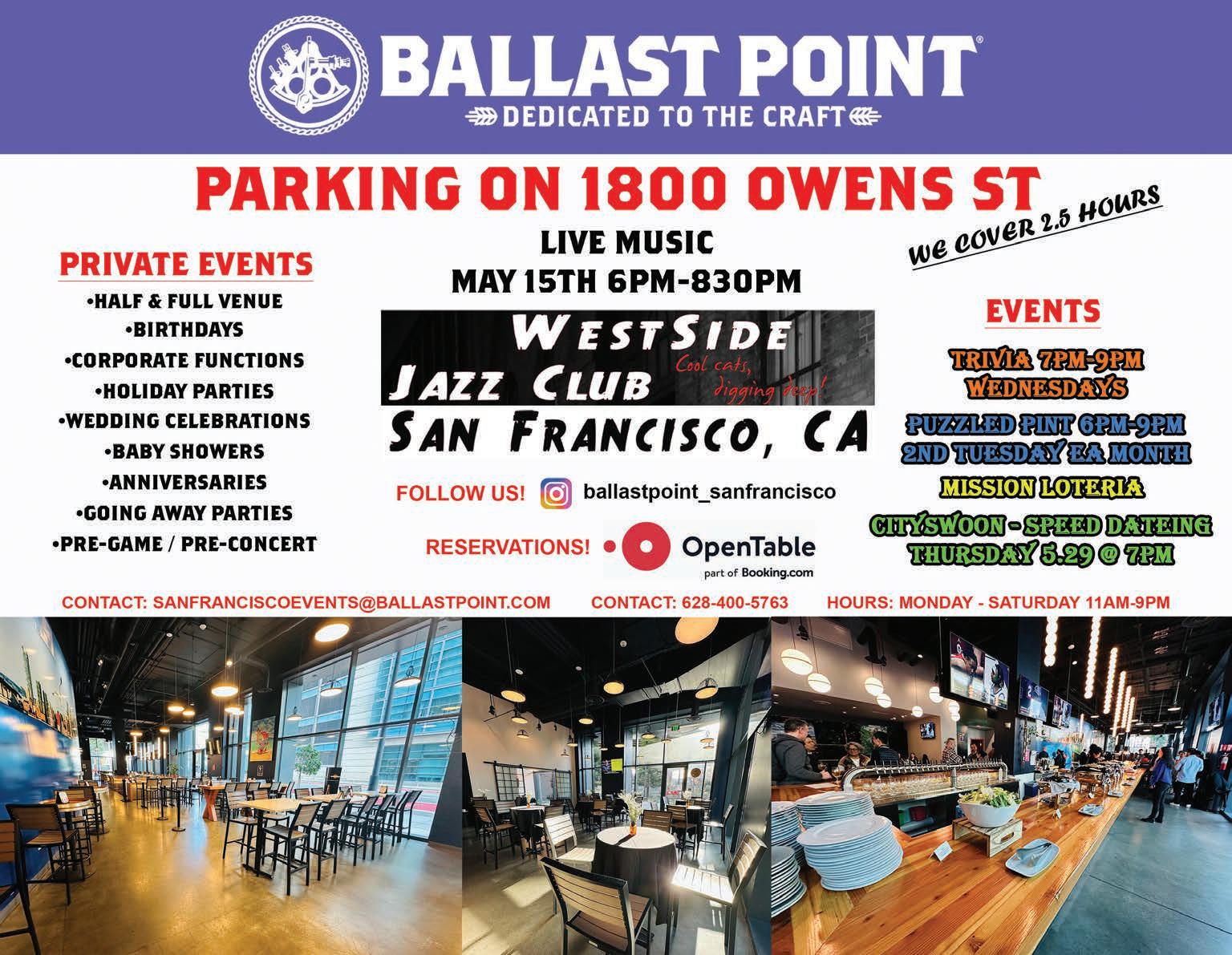
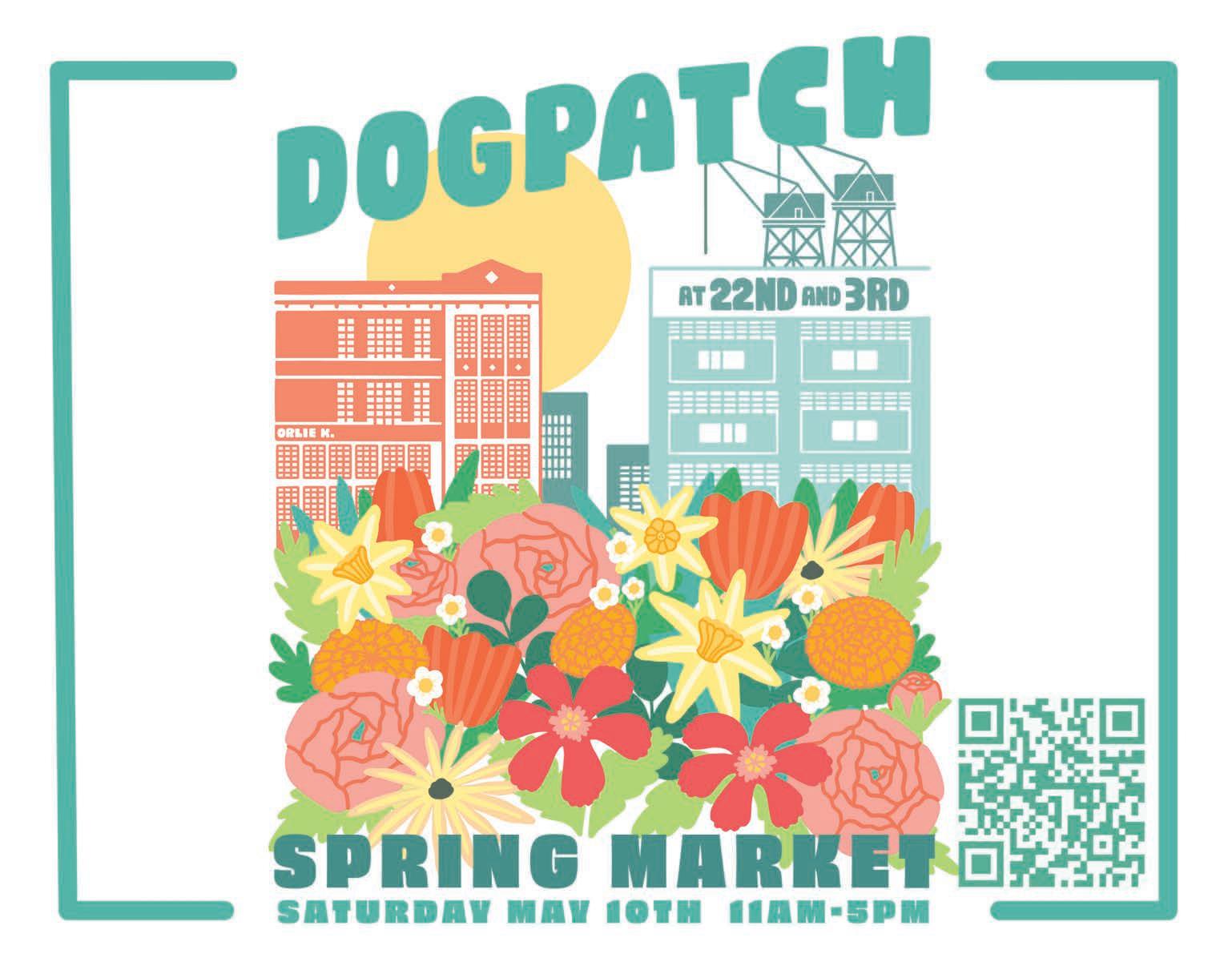
Still Sinking, But Not Sunk
BY MARK STEENSLAND
Before the Gold Rush began in 1849, Mission Bay was a water body that carved into the coastline like a capital “C,” fed by Mission Creek from the west, surrounded by marshy tidelands. Oysters and shellfish in the shallows provided a steady food source to the Ramaytush Ohlone, and, after 1775, to the Spaniards who built Mission Dolores.
As more people arrived, the area became a center for shipbuilding and a railroad hub. What’s now Third Street was once occupied by tracks built on piers above the water.
By the late 1890s, increasing demand for land was met by filling the Bay with dirt and rubbish from other parts of the City. Mission Bay steadily shrunk from the north, until rubble from the 1906 earthquake and fire was used to bury what was left.
By the 1970s, while serving as habitat for birds and other species, and as a refuge for those without permanent homes, the roughly 300 acres were described by many as a wasteland. The railroads and other industries had largely abandoned the area, leaving behind broken tracks, empty warehouses, and trash-covered vacant lots overgrown with weeds.
Beginning in 1981, municipal officials started to plan ways to eliminate this “urban blight” in favor of economic gain. Proposals and partners came and went, until the University of California, San Francisco, took an interest, thanks largely to efforts by then-Mayor Willie Brown, who was determined to keep a second UCSF campus in the City. A key turning point came in 1997 when Catellus, the development company handling the property owned by the railroads, agreed to donate 30 acres to UCSF, a move valued at $170 million.
By 1998, a detailed plan, “the Mission Bay Project,” had been formulated, representing the largest urban project in San Francisco since Golden Gate Park was built in the late 1800s.
But as any smashburger aficionado can tell you, putting heavy weight on top of something soft is going to squeeze the middle out. In geological terms, the process is called subsidence. It’s been happening in Mission Bay for years. The results make themselves known in numerous ways. In a 2019 View article, photos showed how sidewalks in front of the Strata on Fourth Street had sunk six inches over the course of a decade. Thankfully, the buildings aren’t subject to the same process. Because planners knew Mission Bay’s history, developers were required to sink pilings through the fill into bedrock. Sidewalks and streets don’t have this support system; subsidence continues to occur. In some areas, fire hydrants appear to be floating because the path has sunk away from their bases. Streetcorners, such as the one in front of Starbucks at 1375 Third Street, are like a jigsaw
puzzle made of concrete. These uneven surfaces present a danger to passersby, especially those who rely on walkers and wheelchairs.
At the Radiance, a 99-unit condominium building, the sidewalks sank and separated so much that ramps had to be built to enable residents to access entrances on Mission Bay Boulevard and China Basin Street. Since the damage isn’t connected to work performed during construction of the buildings, taking action against the developers and contractors under Senate Bill 800—the “Right to Repair Act” enacted in 2003— isn’t an option. That law only covers defective work performed by a builder, providing them with an opportunity to make repairs before owners sue.
Unsure what to do to address infrastructure subsidence, Radiance residents turned to Daniel Rottinghaus, an attorney with Berding & Weil who specializes in commercial and residential real estate issues.
Since 2022, when the View first covered his involvement with the Radiance Owners Association, Rottinghaus has been engaged in what he calls a collaborative effort with the City Attorney to find a “win-win” solution to address the damage caused by subsidence. Instead of pursuing a financial payout only for Radiance residents, Rottinghaus is working with the association as class representatives, acting on behalf of everyone in Mission Bay in what’s called a “mandamus claim,” asserting that the government should take responsibility for the sinking sidewalks and not pass the burden onto building owners.
Deciding the best way to do that is complicated for at least two reasons.
First, repairing subsidence damage is expensive, costs that aren’t included in the municipal budget. Rather, the Lurie Administration is looking for ways to lower an estimated 2026 $876 million shortfall.
Second, because the sinking will continue—as much as 24 inches over the next five decades, according to one soil report—repairs must continue as well. Finding a solution that can adapt to changes over time isn’t easy.
Rottinghaus wants to take what he calls a “triage” approach, focusing on the 30 or so acres around the Radiance where the problems are most severe because the fill is deepest. He’s working with multiple consultants, mapping subsidence-related problems with a color-coding system. He exploring engaging a Netherlands-based company that uses satellite imaging to map changes in ground levels over time.
One hope is that the repairs could be funded either by refinancing the original development bonds at a lower rate or by lengthening their terms. Rottinghaus believes this could be accomplished without increases to property and Mello Roos taxes which service the bonds.
Crosswords
BY DENA WITKES
R. VERKUIL

CLASSIFIED ADS
Sales Admin Assistant Wanted
Sales Administrative Assistant Wanted. (Very) part-time, to track and cultivate leads; support marketing efforts. Contact: editor@potreroview.net.
Seeking Tennis Partner
Sixty-something male intermediate tennis player looking for (semi) regular rally or game partner. Email editor@ potreroview.net
Legal Notices
The View accepts legal notices. Please contact: production@potreroview.net; 415.643.9578.
Freelance Writers Wanted
Modest pay, interesting assignments. Contact: editor@potreroview.net
Write Your Own Obituary
We're all going to die; why leave the writing of your obit to someone else? Whether you believe the end is imminent or just something you contemplate idly whilst taking a shower, you can control your own destiny, or at least how it's reported. Or, after examining your life story and finding it lacking, add to it! Up to six people in three two-hour sessions, $150. Interested parties should contact editor@potreroview.net
Got something to sell? Have a service to provide? Each classified ad is $25 for up to 200 characters. www. potreroview.net/advertise
for it really. Overall, with the added flexibility, the added accommodations have been a real benefit for everyone, although not problem-free.”
The presence of animals in hospitals inevitably raises safety, logistical, and individual preference concerns. Some people are afraid of dogs. There’s a risk of zoonotic infections. A recent study noted the potential for therapy animals to transmit hospital-associated pathogens.
“It’s a mess,” said one person familiar with SFGH’s animal-friendly policy, who preferred to remain anonymous. They and others pointed to the hospital’s lack of structure and capacity to manage dogs, concerns about cleanliness, as well as spillover obligations forced on an already stressed workforce.
As many as one out of three Americans are allergic to animals. Pet sensitivities can trigger or worsen asthma
POTRERO VIEW LOCAL BUSINESSES

Dear Readers
symptoms. People who have a severe allergic reaction to a dog encounter, or even the lingering presence of animal dander, including potential anaphylaxis, may need an immediate injection of epinephrine.
However, studies have also identified benefits from accommodating creatures: decreased depression in cancer patients and reduced physiological stress among healthcare professionals.
“Occasionally with aggressive dogs, we ask that they be removed,” recounted Colwell. “We’ve also had two situations where the dog was involved in an accident and either injured and/or killed, and at the same time the person is injured/ill,” recounted Colwell. “So, there’ve been cases where the dog was brought in despite being killed by accident. We’re not approved to either treat or maintain bodies of animals and that has concerns regarding accreditation as a human facility to manage animals. We were able to find a room that was separate from anybody else and animal control ultimately was able to come in and take possession of the body.”
Other Bay Area hospitals take a more restrictive approach.
“Personal pets and other animals are generally prohibited in UCSF buildings, including UCSF leased space,” Elizabeth Fernandez, University of California, San Francisco senior public information representative, emphasized. “However, the ADA, California Code and United States Fair Housing Act contain provisions regarding service animals and assistance animals that ensure facilities and services are fully accessible to people with disabilities. Thus, university policies, practices, and procedures permit the presence of service and assistance animals used by employees, students, and members of the public with disabilities as mentioned in Policy 335 of the California Department of State Hospitals.”
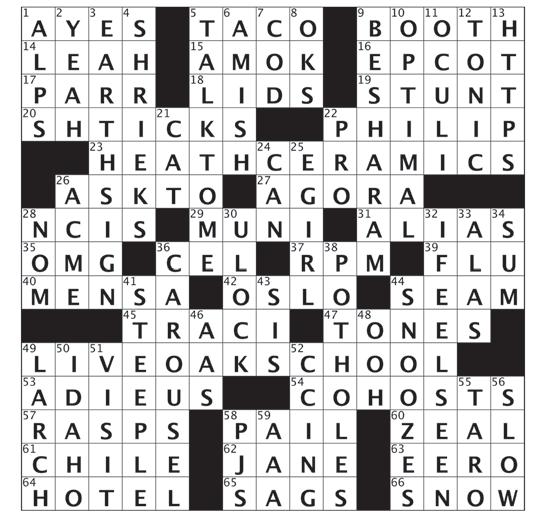
“As a general rule, we do not allow pets or emotional support
animals in the emergency department or hospital for safety/liability reasons,” Sarah Foad, Director of Patient Experience at Stanford Health, affirmed. “However, we make exceptions for end-of-life circumstances if the patient is admitted to the hospital. We allow service animals in accordance with ADA when it is safe for them and our patient population.”
There have been incidents of owners who don’t have people to take care of their “…pets in the ED,” recalled Foad. “It is a very challenging situation, as we aim to prioritize the safety of the patient and the animal. We have a veterinarian on call, whom we consult with, then our process is to safely relocate the animal until the patient is able to care for them again. Oftentimes, this means asking Santa Clara County Animal Services to collect and house the pet temporarily.”
“Our agency is able to help with taking in animals from patients being admitted to the hospital if there is no family, friend, neighbor, or others to take the pet in,” said Deb Campbell, media relations for San Francisco Animal Care and Control. “We will hold the pet up to 14 days in our ‘custody’, but always encourage pet owners/ guardians to try and make other arrangements for care as quickly as they can. We charge daily keep fees. We’re frequently at capacity for animals to care for; overcrowding is a nationwide problem. We’ve seen increases in the amount of ‘custody’ animals that we take in because of an owner/guardian being hospitalized or incarcerated.”
“In most cases we’re able to sort this out on an individual level with the patients. If they are staying for at least 24 hours, in most cases a family member or friend comes to help take care of the dog,” mentioned Colwell. “Although we’ve had occasional occurrences when the patient can’t find someone to take care of the dog, so we the staff at the ED take the dog out. That’s not ideal, obviously, taking staff away from other patients, but people volunteer to do it during their break. We worry about the safety of patients’ health, so we try to accommodate their requests to bring in pets. In one case a patient had to stay longer in the ED than they would otherwise, but
we figured out how to accommodate it. We try to offer the best support to every patient, and we recognize the importance of the support of animals, so we try to accommodate as best we can while maintaining safety.”
POTRERO-ANNEX from front page
Hunter, executive director of Stand in Peace Inc., a San Francisco nonprofit, for help navigating the process. Hunter has been advocating on behalf of AnnexTerrace residents for 20 years, working to remediate maintenance issues and garner support for survivors of domestic and gun violence.
“ Our expertise is creating spaces of safety for safe and livable housing,” said Hunter, who indicated that residents, many of whom hadn’t received the 90-day notices, are confused about the relocation process.
“This is true particularly regarding the different types of vouchers, the timing and logistics of the move, and what to expect if they opt not to move into the new building. It’s clear that we need to do more than just provide information; we need to ensure residents can digest it, ask questions, and have it reinforced through multiple touchpoints,” Hunter wrote in an email to Shanti Project, a San Francisco-based nonprofit that’s under contract with MOHCD to assist Annex residents with relocation.
Hunter recommended that the Authority, Bridge Housing – which is developing EVE – and Shanti Project host technical assistance and capacity-building workshops, trainings, or guided conversations to assist Annex inhabitants, with sessions conducted in a step-by-step format, ample space for questions, real-life examples, and follow-up resources.
To be eligible to relocate to EVE a household must be in good standing; they can’t have been previously evicted or legally served with a complaint or summons.
About 40 Annex residents attended a March meeting hosted by Bridge Housing, with staff from Shanti Project, MOHCD, and the Authority present.
SF GENERAL from front page

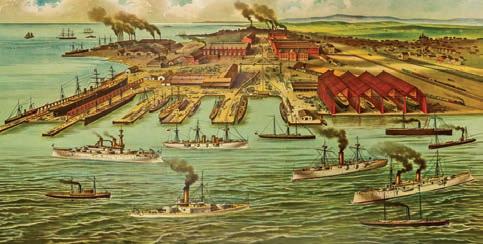
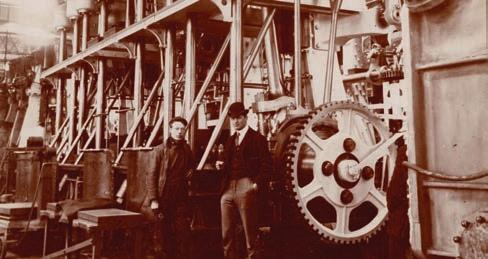
POTRERO HILL & DOGPATCH TIME MACHINE
A brief overview :
The Union Iron Works historic district is bounded by 18th, Illinois, 22nd Street. and the bay. By the 1850s, the district was becoming the most important heavy industry zone on the West Coast; by 1918 the Bethlehem Shipbuilding yard here employed 10,000 workers, becoming the largest shipbuilding complex in the world.

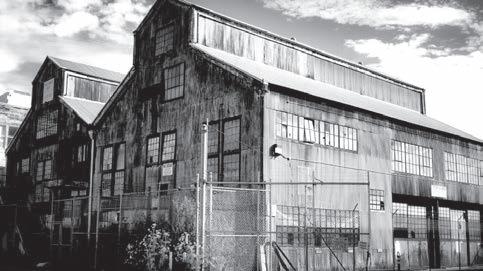
Program for “the largest one-day launching and keel-laying program in the history of shipbuilding’ WWII employee security badges
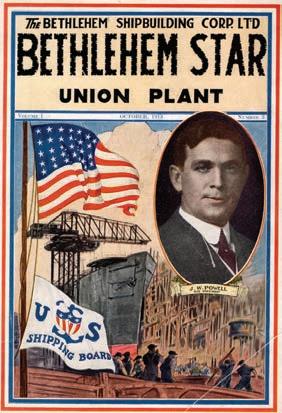

Magazine ‘published by and for employees of the Union Plant’ celebrates WWI shipbuilding
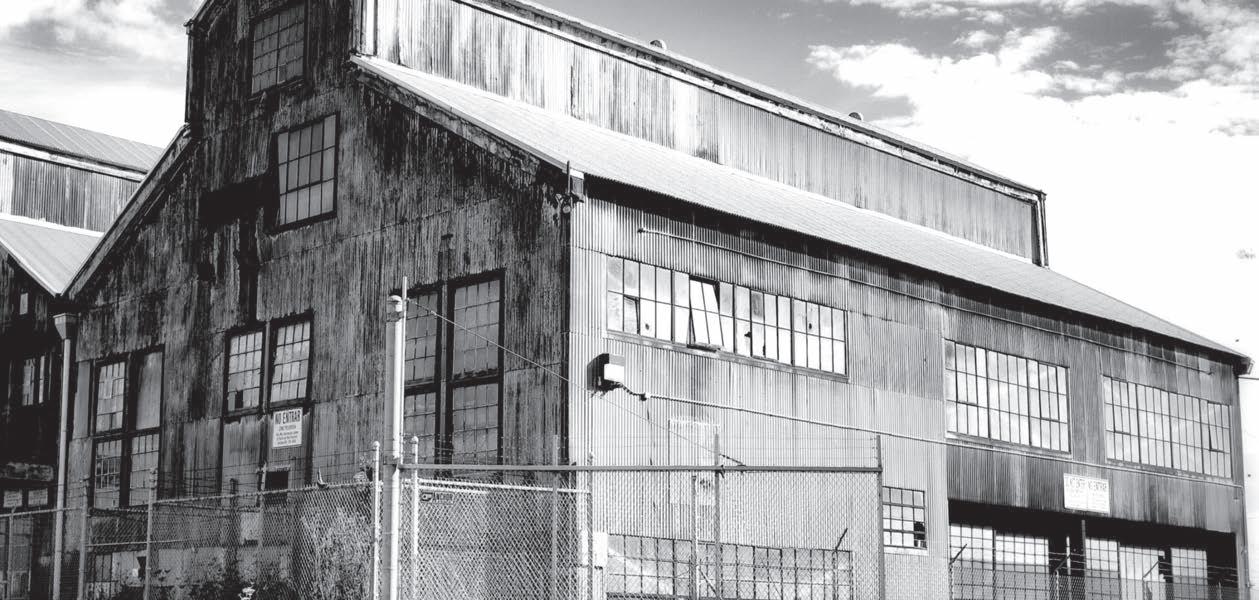
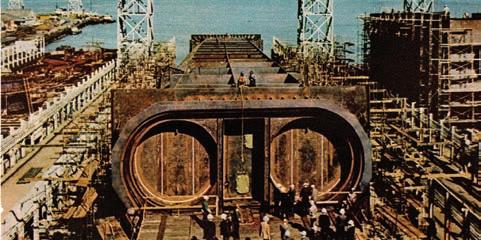

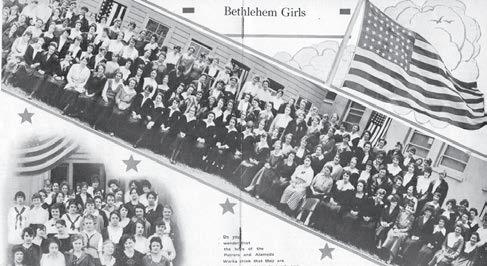
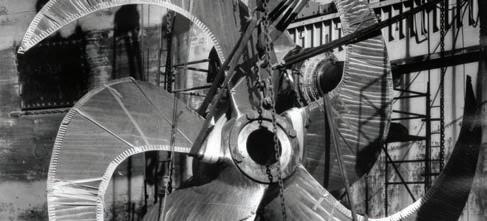
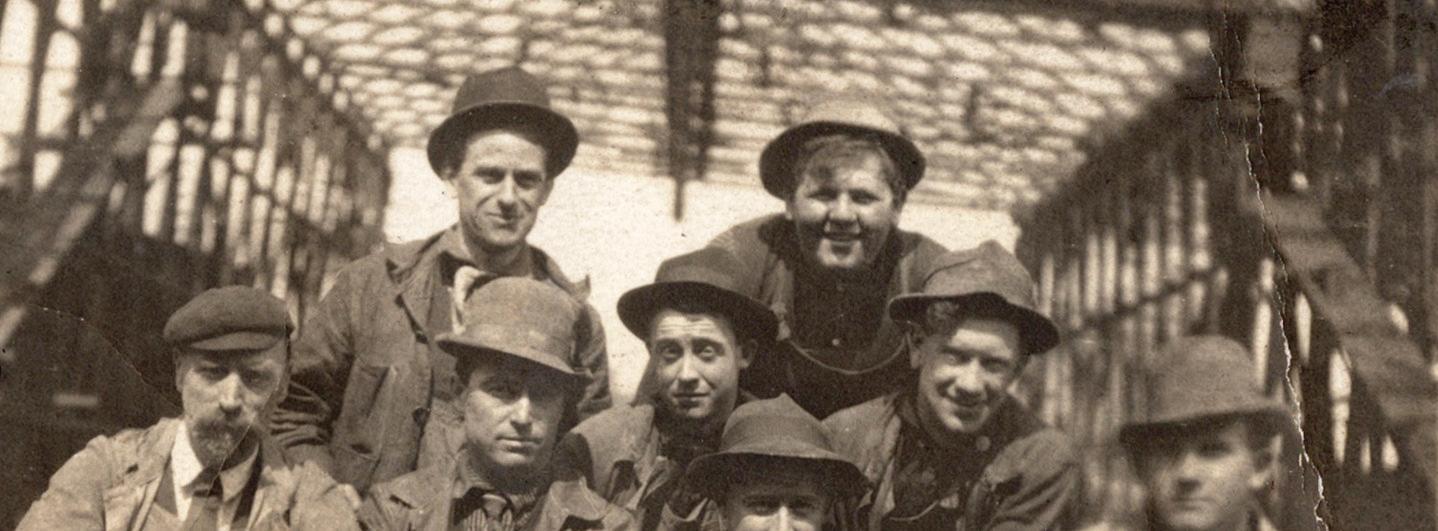
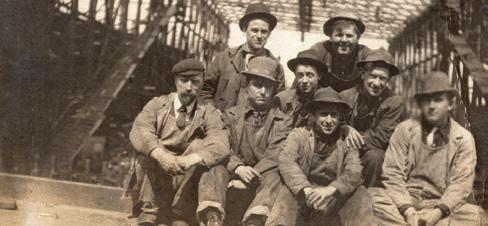
This is the first Potrero Hill & Dogpatch Time Machine page, an ongoing series dedicated to rediscovering the history of our neighborhood, a collaboration between the Potrero Hill Archives Project and the Bethlehem Shipyard Museum. We hope a space in Pier 70’s Building 12 will house our interactive displays about untold stories of local history.
Volunteers, sponsorships and tax-deductible donations (Venmo: @ potrerohistory) will make this Pier 70 Time Machine possible. Contact: Peter Linenthal, peterlinenthal@mac.com, 415-863-0784
&
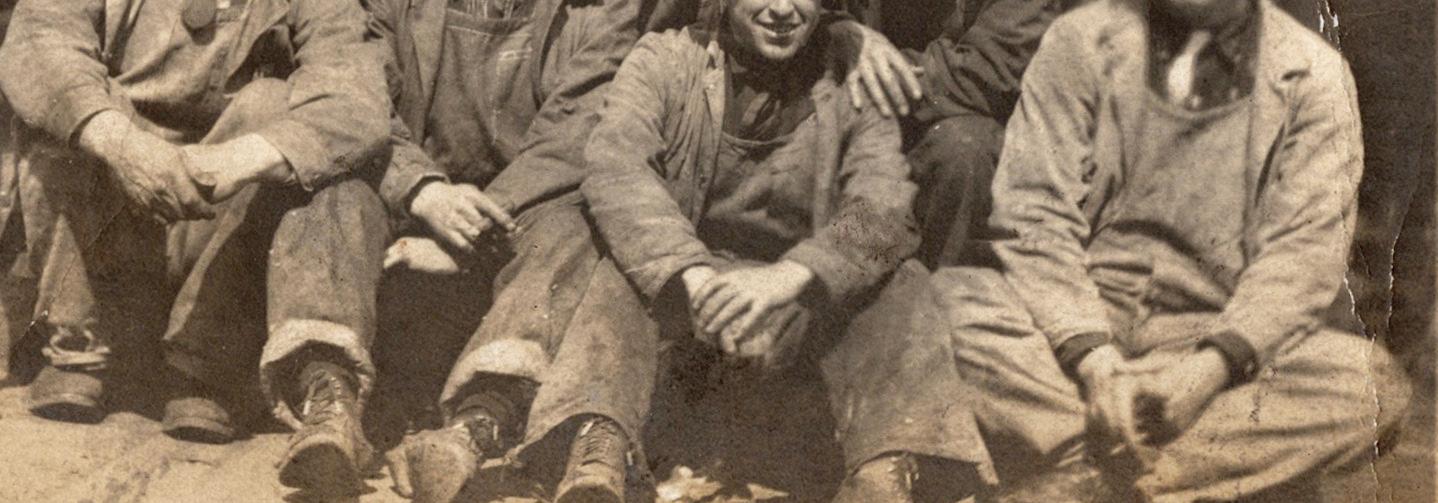
MANY THANKS to RICKSHAW BAGWORKS, 904 22nd St.,
by
‘Fresh
for sponsoring this
founded
Mark Dwight in 2007:
Bags Made Daily, Right Here in San Francisco’,
ongoing series.
Construction of the trans-bay BART tube at Bethlehem Steel’s shipyard in the 1960s
Harry Law surrounded by fellow U.I.W. employees in 1918
Shipbuilding in the 1960s
Engine of the USS Ohio, launched in 1901
U.I.W. on Potrero Point in the early 1900s
“Potrero girls” from the U.I.W.’s Administration building in 1918
Mounting the 25 ton propeller of the hospital ship U.S. Mercy in 2000. Photo by Joseph Blum
Building 21, built 1900, Pier 70’s oldest remaining steel building.
Photo by Dominic Martello
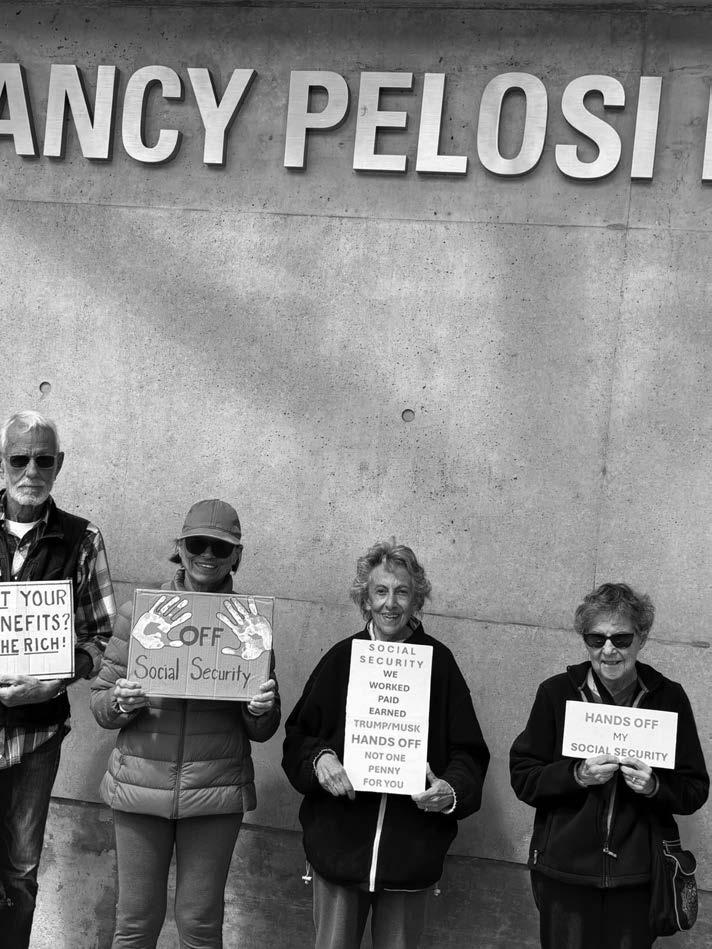
Longtime Potrero Hill resident, Rose Marie Ostler, third from left, and allies protested possible Social Security cuts outside the Federal Building last month. One man "...yelled at us and said “They are not going to take away your Social Security”," reported Ostler. "The guard came out to see if we were okay and said “Thank you for what you are doing as you have every right to be here”. We got several “thumbs up” from those passing by and 20 honks!
POTRERO-ANNEX from page 12
One asked whether undocumented immigrants would be able to secure new housing.
“All leased households will continue to be offered the same opportunities and rent calculation will not change,” said Authority staff.
According to Hunter, Aqil Algere, a Peer Advocate Care Team navigator, represented Shanti Project at the meeting.
“He didn’t know the answers to the questions. He said he would take the questions back to Shanti Project’s office to get information. Then we didn’t hear back from him. Residents who are not in good standing are concerned they will end up unhoused,” said Hunter.
Shanti Project referred all View questions to MOHCD and the Authority.
Annex residents may be hesitant to move into EVE because it’ll house both former Annex and Terrace residents; in the past there’s been violence between inhabitants of the complexes.
“Everyone is aware of the historical violence and its impacts, as we have been in other HOPE SF projects. The City, along with our on-site service providers, take resident safety very seriously. It will continue to work to understand each household’s concerns while we identify options and solutions that will support their overall health, wellbeing and safety,” said a MOHCD representative, who asked not to be named.
Annex residents are also concerned that landlords won’t accept Section 8. It can take two years or more to find a property willing to accept a voucher. When SFHA opened its rental assistance waitlist in 2023, with 6,500 spots available, more than 60,000 applications were received.
other concerns under the former management’s supervision. The Office of the City Attorney of San Francisco found no evidence to substantiate the claims. The View contacted Bell Properties multiple times to ask about its managerial plans with no response.
“This is likely the first relocation experience for many residents in decades,” said Hunter. “We must approach this moment with care, cultural humility, and responsiveness. Without this, we risk perpetuating misinformation, fear, and potential displacement; something I know we all want to avoid.”
“I and some of the (Annex) residents have been requesting reports on the hiring status of the project for the past year and getting no answers,” said Hatter. “At this (March) meeting, when the question of local hire came up, one of the contractor’s staff got busy texting someone… then announced that the project had 20.75 percent local hire compliance with no proof to back up the statement.”
Mikayla Carter, San Francisco Office of Economic and Workforce Development (OEWD) senior communications specialist, was unaware of any employment inquiries from Annex residents.
“That said, OEWD is a large organization, so I can’t speak definitively for every corner of the department. No OEWD representatives were present (at the March meeting). OEWD provides Bridge Housing with the workforce data, and Bridge Housing incorporates that information into its public meetings,” said Carter.
Carter said that since January 1, 2024, 11 Potrero Annex or Terrace residents have worked on EVE. Bridge Housing didn’t respond to questions regarding local hires.
colleagues are immaturely gifted, on the spectrum, being ankle-monitored for harassment, and drug-addicted. These traits aren’t background information, they’re featured, as superpowers, vulnerabilities to be accommodated or leveraged, square pegs that must be compassionately fashioned into roundish holes.
An underlying theme is the cascading tragedies caused by a constant need or desire to generate profits, along with patient jockeying to be seen first, or escape being seen at all.
The ER doctors and nurses, no matter how capable, cannot cure all that ails us. The Pitt might prompt a viewer to want to visit an ER, not for assistance, but to give a health care provider a hug. But the show suggests that we can’t just hug it out. The real way to express our appreciation for essential workers, our first and last line of defense, is to take responsibility for our part in stirring the chaos, working to fix what’s going on outside hospital walls. We should all aspire to be as competent and caring as what’s depicted by the show’s actors. Who would have thought that it’d need to be said: science is real.
“If a person cannot get new housing by the time they are set to leave the Annex, they are worried that will push them to the end of the line to get public housing again,” said Edward Hatter, executive director of the Potrero Hill Neighborhood House (the Nabe).
“We have referred residents to our community-based access points to access the homelessness response system, including prevention, shelter, and long-term affordable housing. We will also be hosting onsite service events in May to bring service providers directly to residents and provide onsite housing assessments for residents. The goal is to connect people with services and housing resources before they must leave the Annex,” said a representative for the San Francisco Department of Homelessness and Supportive Housing.
“I will make sure residents have what they need for a successful transition,” said District 10 Supervisor Shamann Walton.
March meeting participants asked to tour EVE before deciding where to move. MOHCD said it’s working to ensure residents can safely visit the building while it’s under construction, with floor plans and a brief video available.
In 2018 Annex households were assigned a lottery number that determines the sequence for them to be placed in an EVE unit. Households with legitimate leases will be provided with relocation benefits based on a cost schedule that differs depending on unit size; $780 is provided to relocate from a onebedroom unit.
Bell Properties took over AnnexTerrace management in March. The switch in property management companies occurred after years of allegations of problems with squatting, fires, and
Hatter said EVE construction has triggered parking problems, with the 1101 Connecticut Street garage intermittently blocked.
“(This occurs via) truck unloading or on standby to unload preventing them from getting to work,” said Hatter.
Hatter also said there were concerns about high asbestos dust levels in February and March.
“There were no early notifications of these events and no answer when asked why,” said Hatter.
The elevated levels occurred during construction of EVE sidewalks. In a written statement Bridge Housing acknowledged that there were “slightly elevated levels” of naturally occurring asbestos dust recorded on February 27 and March 21. Annex, like many structures on the Hill, sits on top of serpentine rock, which contains asbestos.
“Consistent with construction mitigation protocols, workers immediately sprayed the affected areas with water to reduce dust levels. The exceedance was indicated by signage on the site visible to the surrounding community. Neighbors were informed of these short-term exceedances at the next…meeting held on March 27,” stated Bridge Housing.
PUBLISHER'S VIEW from page 2
pill or who’s looking to self-sooth by harming others. We are the innocent bystanders at a concert, having a good time, when very bad things happen, to us or our neighbors.
Meanwhile, that thin medical line embodies the present primacy of individual identity, clashing with the need to effectively operate as a whole. Wyle, ethnicity-less in his role 20 years ago, is now firmly Jewish. His student-
neighbor, Torraku Ramen, which first opened on the Hill in 2018, following a month later, though it musters on in the Marina… Meanwhile, fraud accusations felled the board of directors of the 888 Seventh Street Owners Association , with more than five percent of association members calling for election of a new board, to be held in June…while the number of tents occupied by unhoused individuals declined by 62 percent over the past year citywide, the Central Waterfront experienced a sharp jump in bivouacs, from six to 22.
Narking
According to The San Francisco Standard , it can take five years to secure a monthly permit for one of the roughly 850, $170 a month, spots in the San Francisco General parking garage. There are around 600 people on the waitlist, which was introduced several years ago. Those who live outside the City, distant from BART stations, must generally hope to find (sparse) street parking, park in offsite lots in Mission Bay and catch a shuttle or pay $580 a month for daily parking in the garage. While the hospital attributes high demand to staff expansion and a rise in patient visits, its advent also coincided with a shift from transit to personal driving during the COVID-19 pandemic.
View Still Obscured
Last month’s news that The Potrero View was in danger of folding prompted upwards of two-dozen subscriptions or donations from dedicated readers, including a generous contribution from Ralph and Regina Anavy. Still, the paper needs a few hundred more supporters to survive. Those who want to keep their View are invited throughout the publication to advertise, subscribe or donate, with limited edition anniversary T-shirts and hats available in gratitude. The View also welcomes assistance with marketing and ad sales and is open to new ownership as a means to energize the paper, which publisher Steven Moss has shepherded for 18 years: editor@ potreroview.net.
PHOTO: Potrero View Staff
SHORT CUTS from page 2
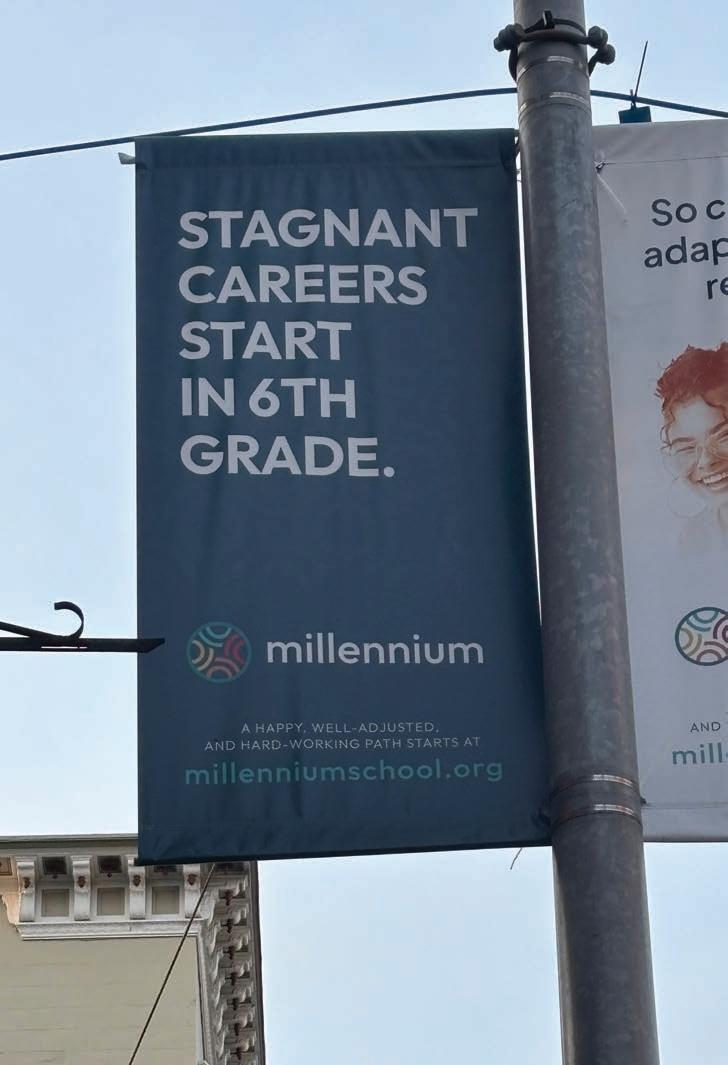
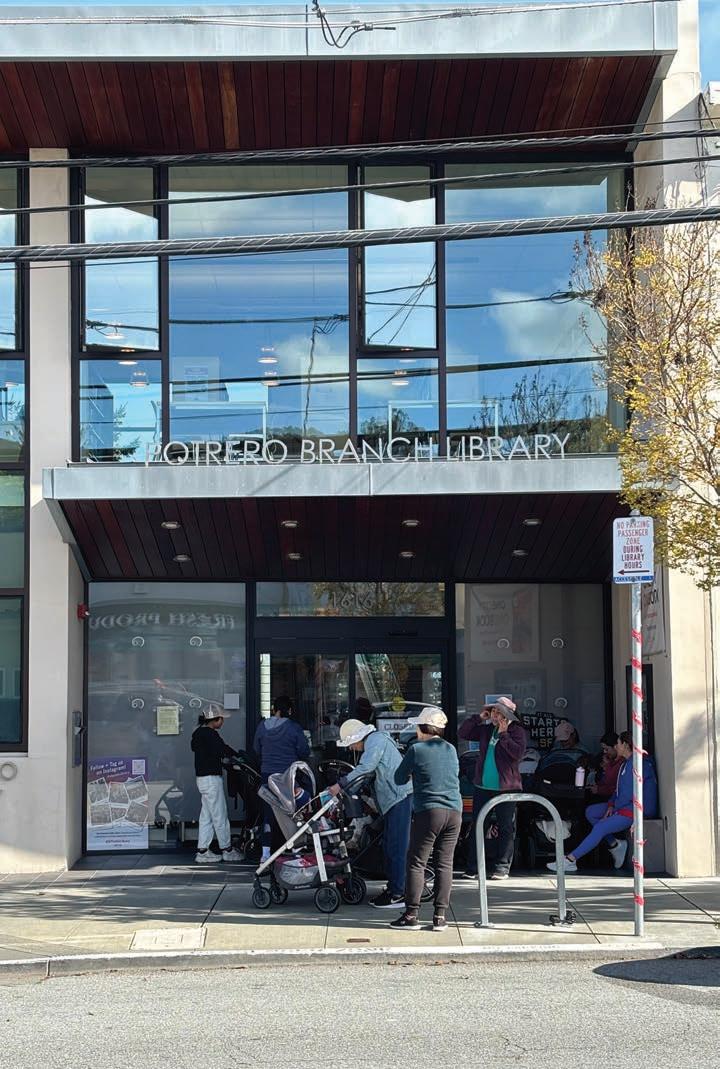
CHOOSE A SHIRT OR CAP SUPPORT YOUR VIEW
To celebrate our 55th anniversary, The View is gifting one limited-edition t-shirt or cap for donations of $60 or more (while supplies last)!
55th ANNIVERSARY TEES
Unisex cotton t-shirts available in two designs printed in brown on natural tone fabric. Super comfy 100% preshrunk cotton jersey.
Choose
55th ANNIVERSARY CAPS
Mesh back truckers cap with an adjustable snapback closure available in two designs. Stone colored cap has brown imprint. One size fits all.
I would like to support the View with my contribution of:
Please send my gift to:




[Left] The pressures on, kid. At Franklin and Turk streets. [Right] Waiting for story time, at the Potrero branch library.
PHOTOS: Potrero View Staff
“Activist” Tee on Cream “Newsboy” Hat on Stone
Hat on Stone

































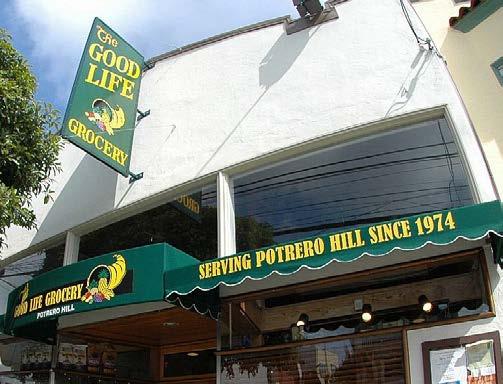














Pico de Gallo and Mango Salsa
